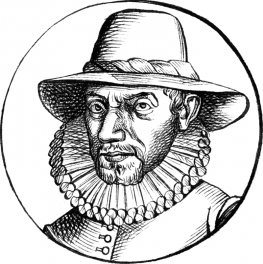History’s Most Gruesome and Violent Deaths To Ever Happen
September 12, 2017
Death is inevitable.
It doesn’t matter who you are, what you’ve done, how much money you have, or how you got it. You will die; sure as the night follows the day.
How you go is a different matter, however.
Some die peacefully in their beds, surrounded by their loved ones – others aren’t so lucky.
Here is a list of the most gruesome deaths in history.
1. Sean Doyle (2002)
Sean Doyle was out with his friend Michael and Michael’s girlfriend during the holiday season in 2002.
Details get a bit fuzzy here, but it’s thought that Doyle was flirting with Michael’s girlfriend, which angered Michael.
We can’t be sure it was he, but eyewitnesses report they heard Doyle yelling, “No! Don’t break my legs!” while getting beaten up pretty badly.
Next thing Doyle knew, he was being thrown down an open manhole – an 18-foot drop into boiling water.
The worst part was that Doyle didn’t die on impact, and was still alive as first respondents arrived on the scene.
The respondents were helpless as the temperatures were estimated to be around 300 degrees Fahrenheit in the tunnels.
After Doyle’s body was recovered some hours later, the outer layer of his skin had completely peeled off his body and his organs were cooked to a crisp.
An autopsy revealed that he had suffered no trauma to the head or broken bones, meaning he was conscious as his body was being roasted.

2. David Allen Kirwan (1981)
David Allen Kirwan, a 24-year-old from California, was taking a trip with his friend Ronald Ratliff and his dog, Moosie, through the Yellowstone thermal area.
He and Ratliff decided to park the car and go check out the hot springs along with the dog.
Moosie began yelping violently as he had fallen into the hot spring.
This prompted David to attempt to save him, and despite bystanders screaming warnings for him not to jump in – to which he replied, “Like hell, I won’t!’ – he dived face-first into the boiling water.
Kirwan attempted to bring the dog towards the shore, and then climb out. Ratliff pulled out Kirwan, which resulted in second-degree burns to his feet.
Kirwan, on the other hand, was in bad shape – and that’s putting it kindly. He went blind and suffered third-degree burns on his entire body. Head, chest, arms, legs.
In fact, when one of the bystanders took off Kirwan’s shoes, his skin, which was already peeling everywhere else, came off with the shoe.
He died the next day due to the injuries he sustained. Needless to say, Moosie didn’t make it either.

3. Leaders of the Munster Rebellion (1536)
Certainly one of the most horrifying entries to the list is how the leaders of the Munster rebellion in Germany met their fate.
After their attempted rebellion failed, Bernhard Krechting, Bernhard Knipperdolling, and Jan van Leiden – the three leaders of the rebellion – were seized and sentenced to death by being torn apart using searing, red-hot tongs for an hour.
Yes, you read that right.
Apparently, hanging or quartering or even getting your heads chopped off is too tame a punishment for trying to change the status quo.
They were tied to a stake, while torturers armed with red-hot tongs began to tear arms, legs, and chest until they were nothing but bones, tendons, and intestines. And they weren’t allowed to faint or lose consciousness.
Any time they spent unconscious was added to the hour of punishment.
Finally, when nothing remained of them to rip off, a dagger was thrust into their chest, thereby ending what is undeniably the worst hour of their life.
Their remains were thrown into cages and displayed over the town church, serving as a warning and a deterrent to any wrongdoing or possible civil disobedience or anarchy.
4. William Wallace (1305)
William Wallace’s final days were unpleasant, to say the least.
In the late 13th century, Scotland was a land divided. The Scottish royal family argued bitterly over who the next king should be.
Edward the First, the English king at the time, decided to seize the opportunity and march to Scotland and add it to his conquered lands.
Brutal battles and resistance could not stop Edward the First from seizing Scotland.
The Scots sorely resented the English, and retaliated by rallying against their occupation. At the head of these rallies was none other than William Wallace.
Wallace gathered an army of thousands of Scotsmen, and as they marched towards the English strongholds, they inflicted fatal blows to the English in the process.
His army seemed unstoppable – until it was. His army had finally lost its first battle in 1298, forcing Wallace into hiding.
Despite having a sizable bounty hanging over his head, the clans of Scotland regarded Wallace as a national hero and protected him, helping Wallace escape the clutches of the English occupants.
Finally, in 1305, Wallace was captured, after being ratted out by Ralph Rae, whom the English had captured after winning the aforementioned battle.
On August the 23rd, 1305, Wallace was taken to London to face a court of English noblemen, who were undoubtedly acting on the orders of Edward the First.
The trial was, unsurprisingly, merely a formality. Wallace was denied the right to speak or defend himself. A long list of charges, followed by the sentence, was read aloud to the helpless Wallace.
What followed was likely not Wallace’s finest moment. He was stripped naked, dragged through the streets, and tied to a group of horses that dragged him to a field outside London.
As a massive crowd cheered and jeered, Wallace was hung, still naked and more importantly, still alive. They cut off his genitals and cut his stomach open, leaving his intestines to fall out, which they then promptly burned, in front of the still-alive-but-barely-conscious Wallace.
Finally, the executioners beheaded him.
His body was cut up into four pieces, each prominently displayed throughout the four corners of Britain. His head was dipped into tar and mounted on the high spikes of London Bridge.
This served to show the power and ruthlessness of the British occupation.

5. Ruler of Mosul (13th Century)
The Mongol army’s raids were feared all throughout the land. They would destroy everything in their path and things would get nasty.
Knowing this, the city of Mosul gave in to the Mongol’s rule without a fuss, accepting their fate. That was until a new ruler of the city of Mosul came into power.
With this new force in power came a change in attitude towards the Mongol rule, which was now being resisted by the inhabitants of Mosul.
This new ruler attempted to rally the men of Mosul against the Mongol rule, which angered the Mongols and prompted them to put the city of Mosul under siege.
During one of the attacks, some Mongol soldiers climbed up the walls of the city but were immediately surrounded and killed.
One of the heads of the murdered Mongol soldiers was placed into a catapult and fired back at the Mongols outside. This infuriated the Mongols and they kicked it up several notches.
After that incident, Mongol forces managed to take the city, and Hulagu, the leader of the Mongol army, ordered his men to bring him the new ruler.
He then had him wrapped in fresh sheepskin and left in the sun for a month, during which rodents, insects, and animals ate him until he died.

6. Balthasar Gerard (1584)
Balthasar Gerard is the only entry on this list who arguably deserved what he got. Still, it was a pretty bad way to go.
Gerard assassinated the Dutch independence leader, William I of Orange, after shooting him twice with a pistol.
He was then captured, tried, and executed – quite gruesomely, even by the standards at the time.
On the first night of his torture, he was tied to a post and whipped. Gerard’s wounds were smeared with honey, to entice a goat to lick him with its rough tongue, except the goat refused.
His hands and feet were then tied up together, and he was left for the night.
The next few days were quite grim for Gerard. He was repeatedly hung on the wall.
One time, a weight of around 150 kilograms was tied to each of his big toes for a half hour, no doubt causing immeasurable damage to his feet.
He was then ordered to wear shoes made of dog skin that were about two fingers small for his feet, further damaging them.
During this state, he was put in front of a fire. The heat caused the shoes to contract further, crushing his feet up into stumps. As the shoes were removed later, his half-broiled skin was removed with it.
As if that weren’t enough, he was then branded at the armpits. Executors also dressed Gerard in a shirt soaked in alcohol and poured sizzling bacon fat on him.
They also placed sharp nails between his flesh and the nails on his fingers.
Finally, and perhaps mercifully, Gerard was executed. Not his finest hour.
The List Goes On
You’d be shocked at the amount of strange and downright gruesome ways people find to die.
It is unfortunate that what marks these individuals’ lives more than anything else, is their death.
Whether due to the outsized battles fought in history, leading to their torture at the hands of nefarious enemies, or a particularly outlandish freak accident, these deaths are sure to survive in popular memory for many years to come.



